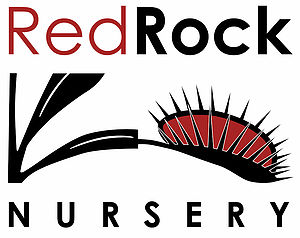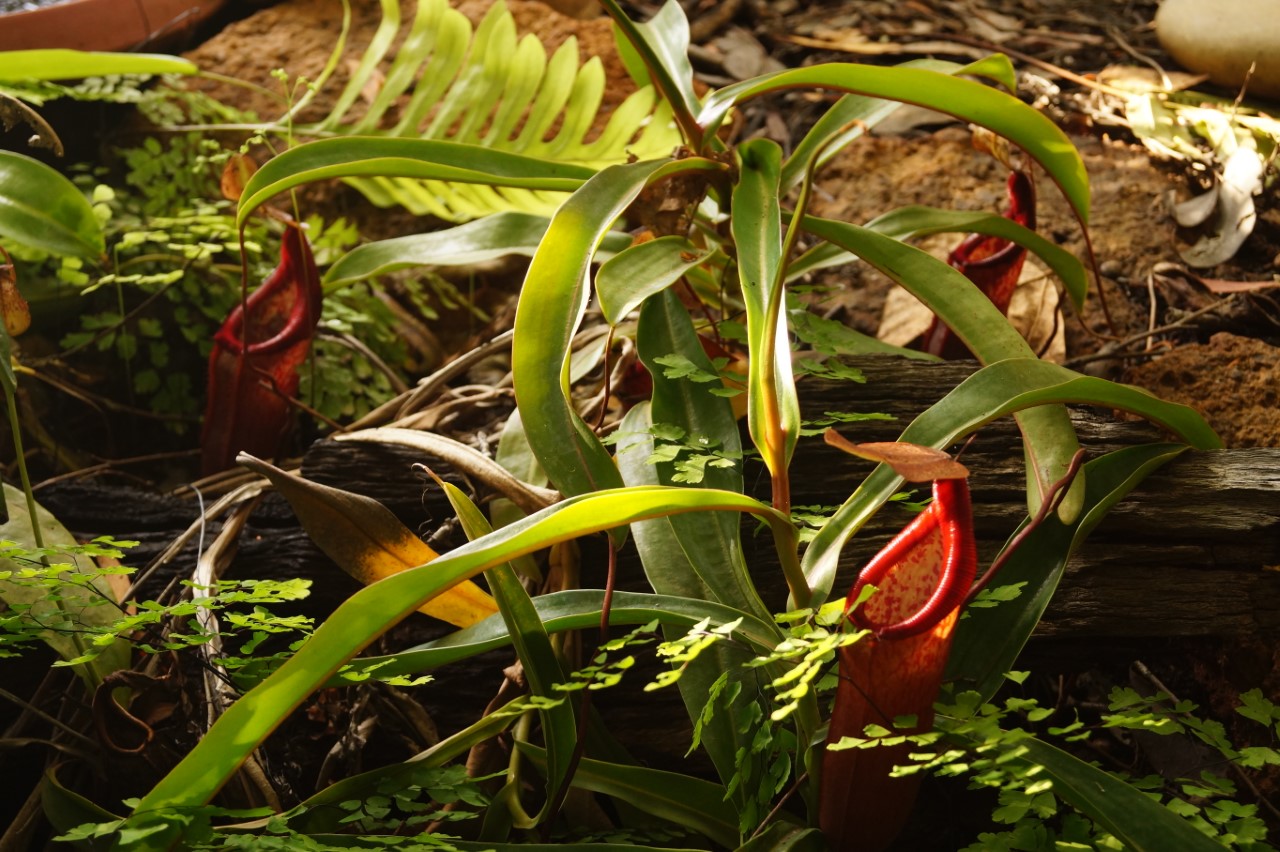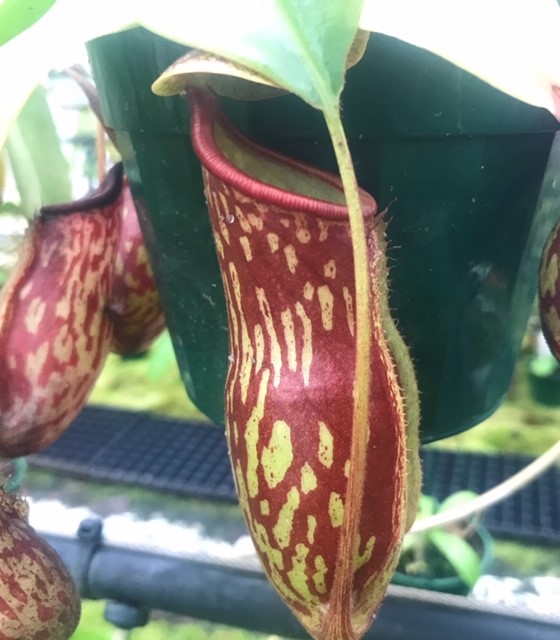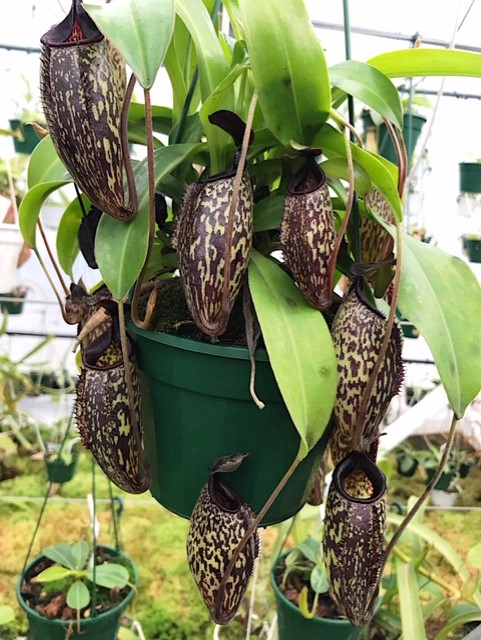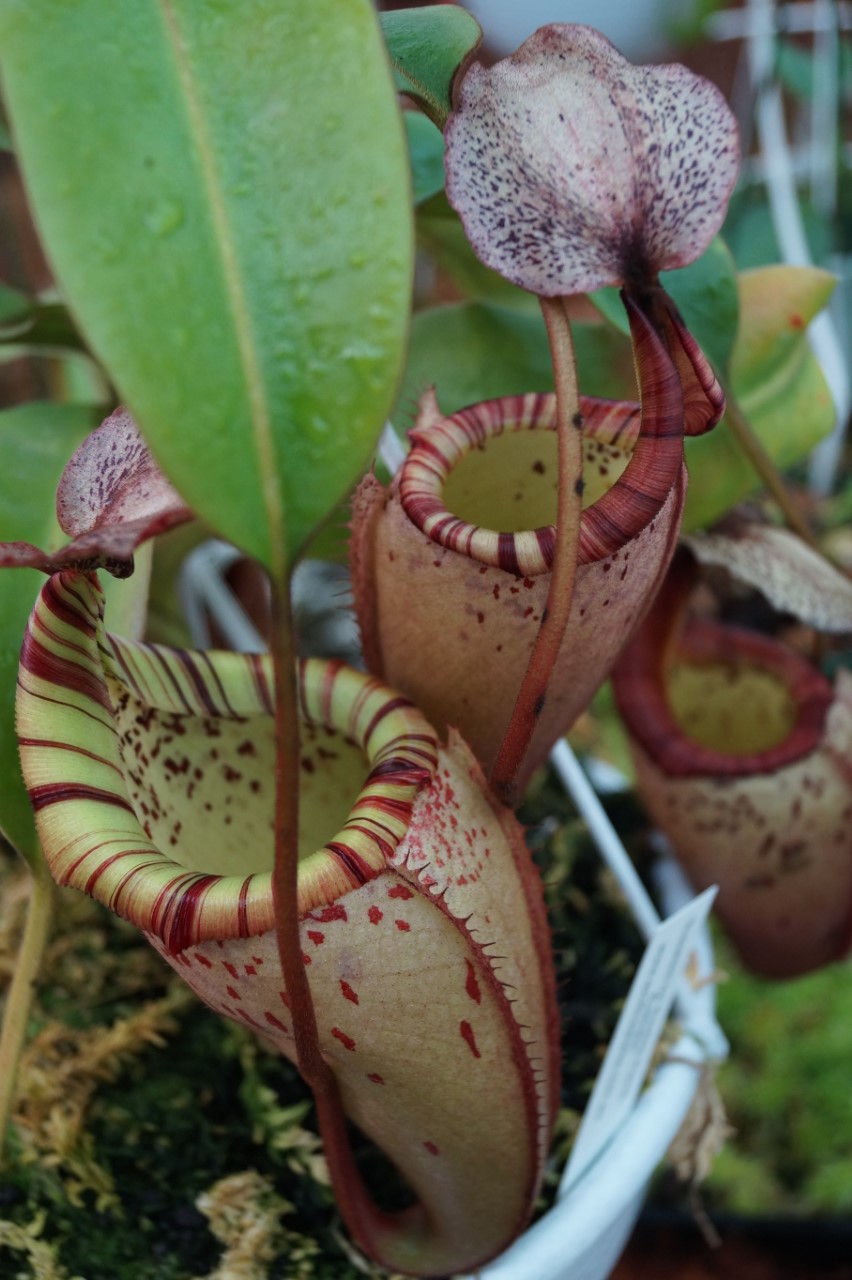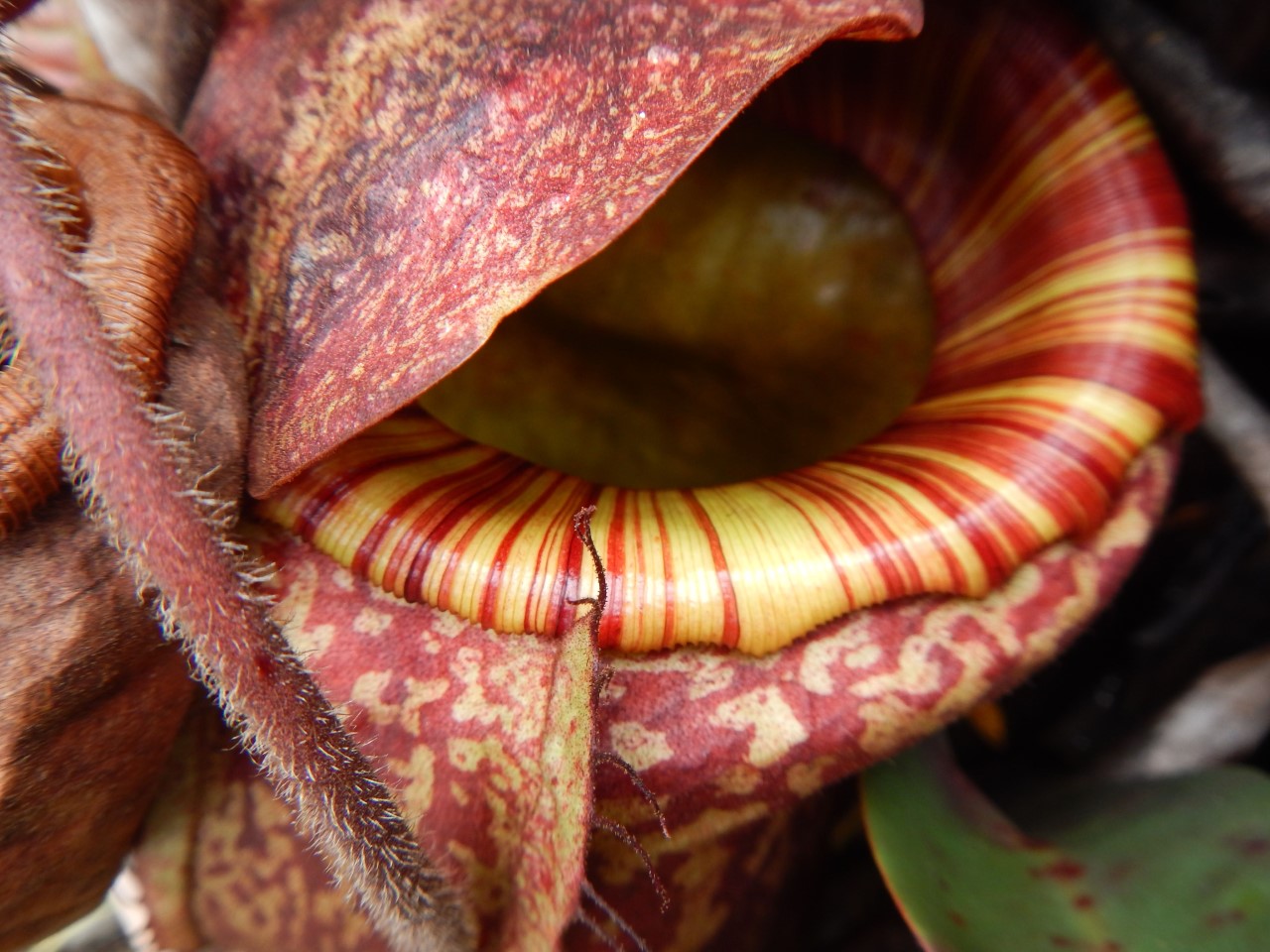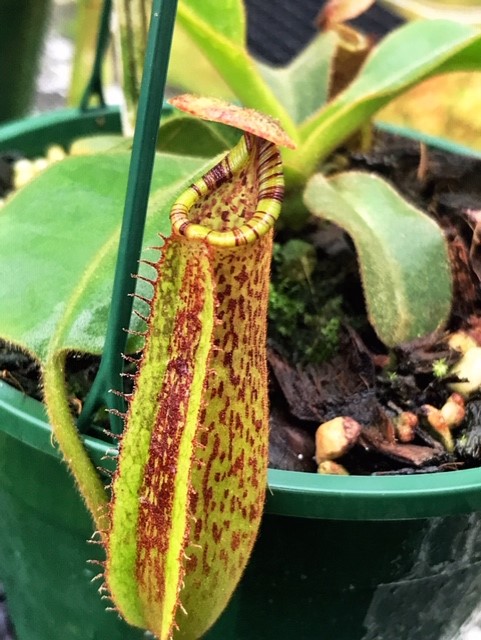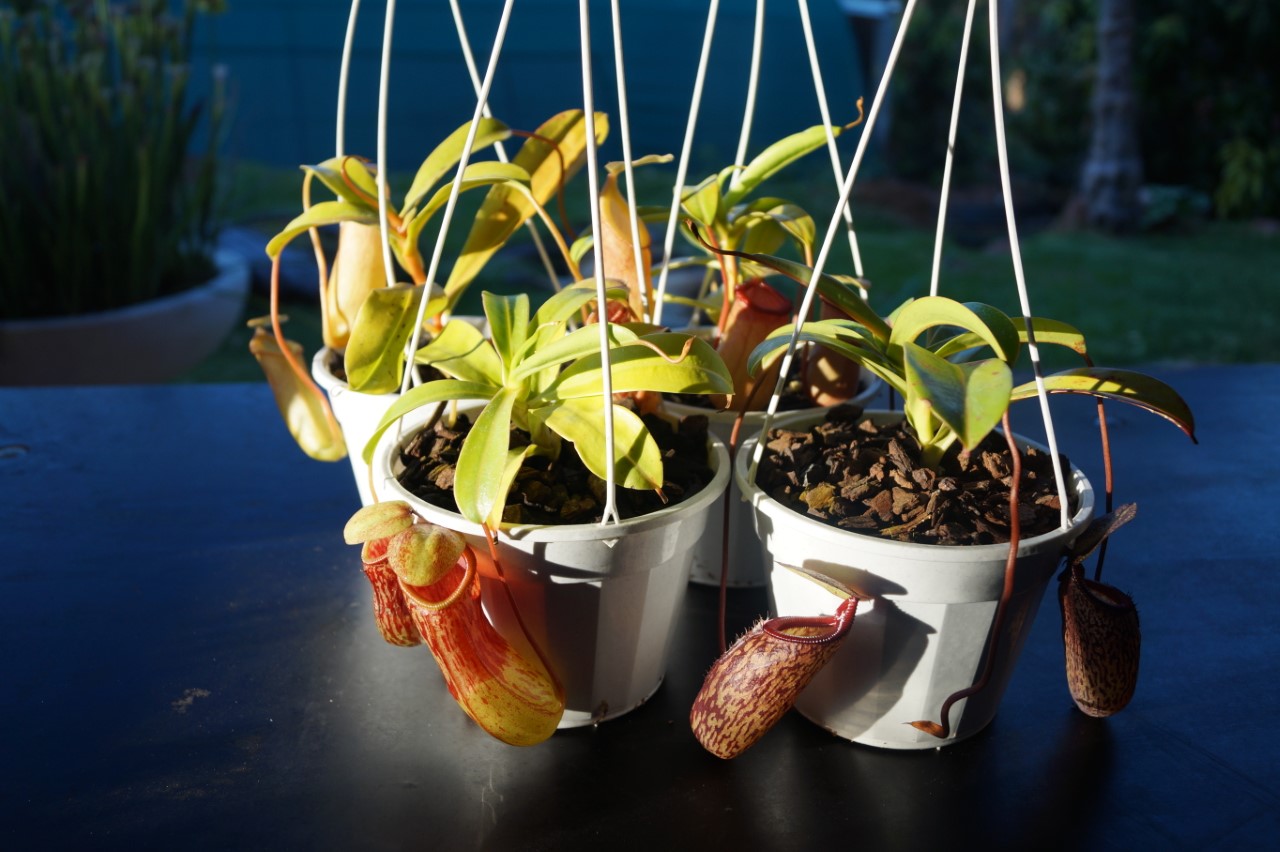NEPENTHES Sp.
Climbing pitcher plant.
A woody-stemmed climbing vine, the leaves of which develop a tendril at the tip. The plant tendrils attach to anything that will support it and allow it to climb. The tendril tip eventually develops into the pitcher which gradually swells then opens, already containing a digestive fluid with the odour of nectar to attract insects. Flowers are small and borne on a foxtail-like raceme.
GROWING MEDIUM: Grow plants in pure sphagnum moss, an orchid mix, coir or coarse free-draining slightly acidic potting mix. We use a 60/40 mix of coir chunks and perlite, with a small amount of fine coir added for a little water retention. Our custom made growing media can be purchased from our nursery in forrestfield.
WATER: Plants should be kept moist at all times. Frequency of watering will depend on the environment you are growing the plant in, and the season. Usually, plants kept indoors or in a greenhouse will need watering less often than plants situated outside, where hot windy weather can dry the pots out quickly….try lifting the pot regularly to feel the weight, if it feels lighter than usual,- it probably needs watering. Keep the insect catching pitchers 1/3 full of water during hot spells, if they are drying out.
FERTILISER: Nepenthes respond well to fertilising, and this can be done a number of different ways. As expected with a carnivorous plant, they feed through their pitchers very well, and can be fed a few insects by hand. Nepenthes can also be fertilised through the soil, either with slow release or liquid fertilisers. It is recommended to use fertilisers at quarter strength, to avoid burning the plants. High nitrogen fertilisers should be avoided, as this will promote lots of leaves at the expense of pitcher production. Plants are supplied with sufficient slow-release fertiliser to last for a couple months following purchase.
SUNLIGHT: Plants require bright filtered light and in summer some form of shade is advised.
GENERAL: Nepenthes require moist/humid growing conditions such as a fernery, greenhouse or if indoors a bathroom. Regular misting is important during summer months in Perth.
Nepenthes Winter Care
-
Given shade for the hotter months, Nepenthes will now benefit from a sunnier position in the winter when outdoor shade covers can come off.
-
Ensure indoor plants get some warmth and good light. Lowland varieties will generally need some artificial heating over winter.
-
Winter growth can be slow with Nepenthes. However, if a plant is positioned with good winter light and trapped warmth during the day, such as in a greenhouse, plants can continue growing and producing pitchers.
-
Remove dead pitchers and leaves to allow increased air circulation and light.
-
Shorter daylight hours and cooler weather mean you can water less often. DO NOT let plants sit in water.
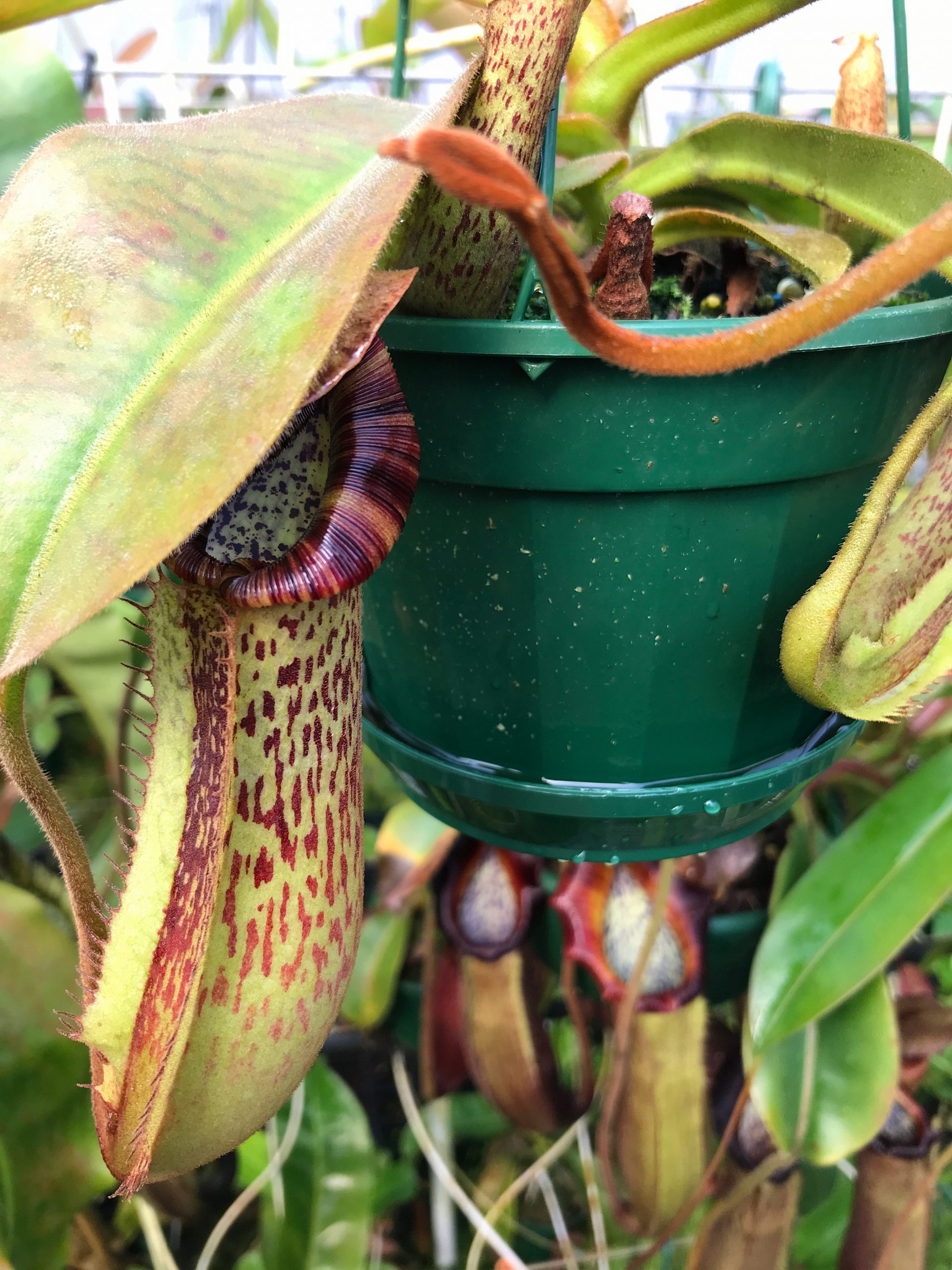
Important information regarding saucers on our hanging Nepenthes plants.
We supply both our 140 mm and 220 mm hanging pots with removable saucers.
They are included to give the option of using them if required, but should only be used if the circumstances require it.
It depends entirely on the environment they are growing in and how often they are watered.
In general, if after watering, the water in the saucer is used up within 1-2 days, the saucer should stay on, but if after 2 days the water in the saucer has not been used up, it is recommended to leave the saucer off until the weather becomes warmer, and the plant is at risk of drying out between waterings.
The plants use more water when growing quickly and also when they are in an environment that has a low humidity and is sunny/hot..ie: hanging outside in WA Summer.
The higher the humidity, the less water they need to keep moist because the media will not dry out as fast.
Keeping the media moist but not waterlogged will maintain good oxygen levels in the media, which prevents root rot and makes for a very happy Nepenthes.
